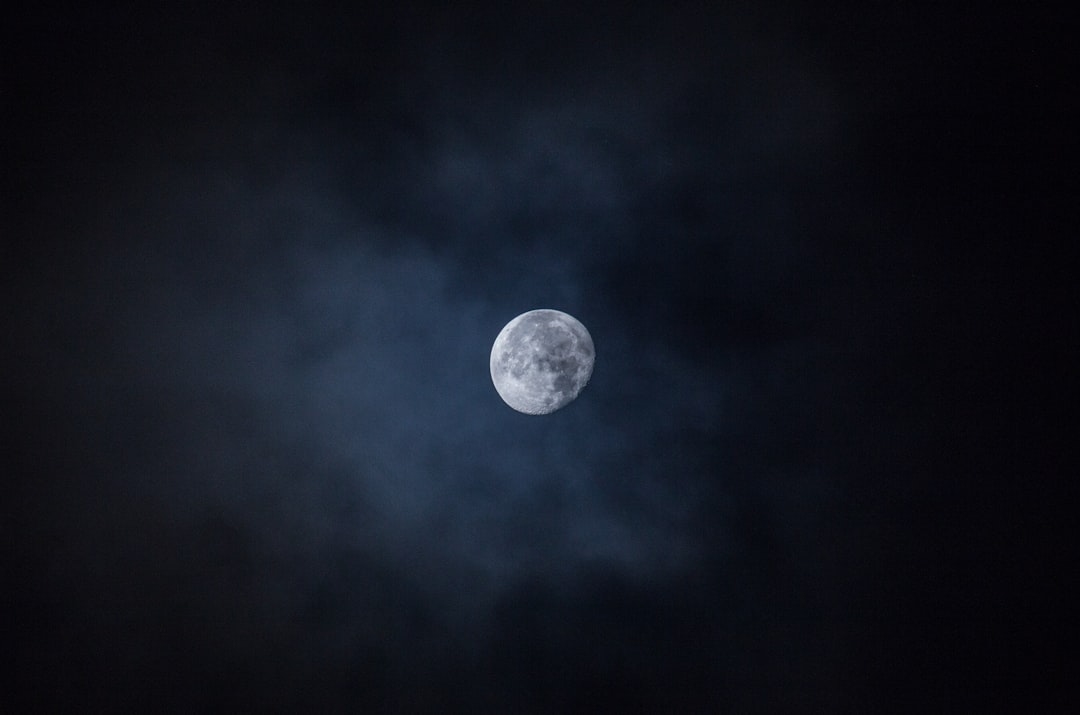The Moon has long captivated human imagination, serving as a symbol of exploration and discovery. However, beyond its romantic allure, the Moon holds significant strategic importance in contemporary geopolitics and scientific endeavors. As nations and private entities increasingly turn their eyes toward the lunar surface, the Moon is emerging as a focal point for discussions surrounding resource acquisition, technological advancement, and international collaboration.
The renewed interest in lunar exploration is not merely a quest for knowledge; it is also a race to secure a foothold in what many consider the next frontier of human activity. In recent years, the Moon has been recognized as a critical asset in the broader context of space exploration. With advancements in technology and a growing understanding of its potential, the Moon is positioned to play a pivotal role in humanity’s future endeavors beyond Earth.
As countries like the United States, China, and Russia ramp up their lunar missions, the strategic implications of these activities become increasingly apparent. The Moon is not just a celestial body; it is a gateway to deeper space exploration and a potential launchpad for missions to Mars and beyond.
Key Takeaways
- The Moon’s strategic importance lies in its potential as a resource hub, space exploration and colonization, influence on Earth’s tides and climate, scientific research and discovery, and national security.
- The Moon has the potential to serve as a resource hub for mining and extracting valuable materials such as water, helium-3, and rare earth elements.
- The Moon’s role in space exploration and colonization is crucial for establishing a sustainable human presence beyond Earth and expanding our understanding of the universe.
- The Moon’s influence on Earth’s tides and climate has significant implications for understanding and mitigating the effects of climate change.
- The Moon’s potential for scientific research and discovery offers opportunities to study the origins of the solar system, conduct astronomical observations, and explore the potential for life beyond Earth.
The Moon as a Potential Resource Hub
One of the most compelling reasons for renewed interest in the Moon is its potential as a resource hub. The lunar surface is rich in materials that could be invaluable for future space missions and even for sustaining life on Earth. For instance, helium-3, a rare isotope on Earth, is abundant on the Moon and holds promise as a clean energy source for nuclear fusion.
The extraction of this resource could revolutionize energy production, providing a sustainable alternative to fossil fuels and addressing global energy demands. Moreover, the Moon’s regolith, or lunar soil, contains various minerals and metals that could be mined for use in construction and manufacturing. Elements such as titanium and rare earth metals are essential for advanced technologies, including electronics and renewable energy systems.
By establishing mining operations on the Moon, nations could reduce their dependence on terrestrial resources, thereby enhancing their economic stability and technological capabilities. This potential for resource extraction positions the Moon as a critical player in the future of both space exploration and terrestrial industry.
The Moon’s Role in Space Exploration and Colonization

The Moon serves as an essential stepping stone for humanity’s ambitions in space exploration and colonization. Its proximity to Earth makes it an ideal location for testing technologies and systems that will be necessary for longer missions to Mars and beyond. By establishing a sustainable human presence on the Moon, space agencies can develop life-support systems, habitat construction techniques, and resource utilization strategies that will be crucial for future interplanetary travel.
Furthermore, the Moon offers unique opportunities for scientific research that can inform colonization efforts. Understanding the lunar environment—its radiation levels, temperature fluctuations, and geological composition—will be vital for ensuring the safety and success of human missions. As nations invest in lunar bases and research stations, they will gather invaluable data that can be applied to future endeavors on other celestial bodies.
The Moon thus stands as both a destination and a launchpad for humanity’s quest to explore the cosmos.
The Moon’s Influence on Earth’s Tides and Climate
| Data/Metric | Description |
|---|---|
| Tidal Range | The difference in height between high and low tides |
| Tidal Frequency | The number of high and low tides in a day |
| Spring Tides | Occurs during the full moon and new moon, with the highest tidal range |
| Neap Tides | Occurs during the first and third quarter moon, with the lowest tidal range |
| Climate Patterns | The moon’s influence on atmospheric tides and weather patterns |
The Moon’s gravitational pull has profound effects on Earth, particularly concerning tides and climate patterns. The rhythmic rise and fall of ocean tides are primarily driven by the Moon’s gravitational influence, which plays a crucial role in maintaining ecological balance in marine environments. These tidal movements are not only vital for marine life but also impact coastal ecosystems and human activities such as fishing and shipping.
Additionally, the Moon’s presence contributes to stabilizing Earth’s axial tilt, which influences climate patterns over geological timescales. This stabilization helps regulate seasonal variations and contributes to the overall climate stability that has allowed life to flourish on Earth. Understanding these dynamics is essential for climate science, as changes in the Moon’s orbit or gravitational influence could have far-reaching implications for Earth’s climate systems.
Thus, the Moon is not merely an object of study; it is an integral component of Earth’s environmental framework.
The Moon’s Potential for Scientific Research and Discovery
The Moon presents an unparalleled opportunity for scientific research and discovery across various fields. Its relatively untouched surface serves as a natural laboratory for studying planetary formation, geology, and the history of our solar system. By analyzing lunar samples and conducting experiments in its unique environment, scientists can gain insights into the processes that shaped not only the Moon but also Earth and other celestial bodies.
Moreover, the Moon’s lack of atmosphere allows for clearer observations of cosmic phenomena than what is possible from Earth. Telescopes placed on the lunar surface could provide unprecedented views of distant galaxies, stars, and other astronomical events. This capability could significantly advance our understanding of the universe and contribute to breakthroughs in astrophysics and cosmology.
As nations invest in lunar research missions, they unlock new avenues for scientific inquiry that could reshape humanity’s understanding of its place in the cosmos.
The Moon’s Strategic Importance for National Security

The strategic importance of the Moon extends into national security considerations as well. As countries vie for dominance in space exploration, control over lunar resources could translate into significant geopolitical advantages.
Furthermore, military applications of lunar technology cannot be overlooked. The ability to deploy satellites or other assets from lunar bases could enhance surveillance capabilities and communication networks on Earth. As space becomes increasingly militarized, securing strategic positions on the Moon may become essential for national defense strategies.
Thus, the Moon’s role in national security underscores its multifaceted importance in contemporary global affairs.
The Moon’s Role in Advancing Technology and Innovation
The challenges associated with lunar exploration are driving technological innovation across multiple sectors. Developing sustainable habitats, life-support systems, and efficient transportation methods for lunar missions requires cutting-edge advancements in engineering and materials science. These innovations often have terrestrial applications, leading to breakthroughs that can benefit industries ranging from healthcare to renewable energy.
Moreover, collaboration between government agencies and private companies fosters an environment ripe for innovation. As commercial entities enter the lunar exploration arena, they bring fresh perspectives and agile approaches to problem-solving. This synergy between public and private sectors accelerates technological development while also creating economic opportunities through job creation and investment in research initiatives.
The Moon thus serves as a catalyst for technological progress that extends far beyond its surface.
The Moon’s Potential for Energy Production
The potential for energy production on the Moon is another compelling aspect of its strategic importance. Helium-3 mining has garnered significant attention due to its promise as a clean energy source with minimal environmental impact compared to traditional fossil fuels. If harnessed effectively, helium-3 could provide a nearly limitless supply of energy through nuclear fusion processes.
In addition to helium-3, solar energy generation on the Moon presents another avenue for sustainable energy production. With continuous sunlight available at certain locations on the lunar surface, solar panels could be deployed to generate power for lunar bases or even transmitted back to Earth. This capability could support long-term human habitation on the Moon while also contributing to global energy needs.
As nations explore these possibilities, they position themselves at the forefront of a new energy revolution that could reshape both space exploration and terrestrial energy consumption.
The Moon’s Importance for International Collaboration and Diplomacy
The renewed interest in lunar exploration has opened avenues for international collaboration that transcend traditional geopolitical rivalries. As multiple nations embark on ambitious lunar missions, there is an opportunity to establish cooperative frameworks that promote peaceful exploration and shared benefits from lunar resources. Collaborative efforts can lead to joint missions, shared research initiatives, and agreements on responsible resource management.
Such international partnerships are essential for addressing challenges associated with space governance and ensuring equitable access to lunar resources. By fostering dialogue among nations, stakeholders can work towards creating guidelines that prioritize sustainability and cooperation over competition. The Moon thus becomes not only a site of exploration but also a platform for diplomacy that can strengthen global ties in an increasingly interconnected world.
The Moon’s Strategic Value for Economic Development
The economic implications of lunar exploration are profound, with potential benefits extending beyond national borders. Establishing a sustainable presence on the Moon could stimulate economic growth through job creation in sectors such as aerospace engineering, robotics, telecommunications, and resource extraction. As countries invest in their lunar programs, they also invest in their workforce and technological infrastructure.
Moreover, commercial opportunities related to lunar tourism and research services are emerging as viable economic avenues. Private companies are exploring ways to offer experiences ranging from lunar landings to scientific research partnerships with universities and institutions worldwide. This burgeoning industry could generate significant revenue while also inspiring future generations to pursue careers in science, technology, engineering, and mathematics (STEM).
The economic development potential associated with lunar activities underscores its strategic value in shaping future economies.
The Future of the Moon’s Strategic Importance
As humanity stands on the brink of a new era in space exploration, the strategic importance of the Moon cannot be overstated. Its potential as a resource hub, platform for scientific discovery, catalyst for technological innovation, and site for international collaboration positions it at the forefront of global interests. The ongoing race to explore and utilize lunar resources reflects broader aspirations for sustainable development both on Earth and beyond.
Looking ahead, it is clear that the Moon will play an increasingly central role in shaping humanity’s future endeavors in space. As nations navigate the complexities of lunar exploration—balancing competition with cooperation—their actions will have lasting implications not only for their own interests but also for global stability and progress. Ultimately, the Moon stands as both a symbol of human curiosity and a testament to our collective potential to explore new frontiers while fostering collaboration across borders.
The moon has increasingly become a focal point of strategic interest for nations around the world, primarily due to its potential resources and its role in future space exploration. As countries race to establish a presence on the lunar surface, the moon is seen not only as a stepping stone for deeper space missions but also as a potential source of valuable materials such as helium-3, which could be used for future energy production. An article on this topic can be found on Real Lore and Order, which delves into the geopolitical implications of lunar exploration and the strategic importance of the moon. For more insights, you can read the article by visiting this link.
WATCH THIS! 🚀 Why The Moon Is The Next Battlefield: The Geopolitics of Cislunar Space
FAQs
What makes the moon a strategic asset?
The moon is a strategic asset due to its potential for scientific research, resource extraction, and as a platform for space exploration and colonization.
How does the moon’s strategic value impact space exploration?
The moon’s strategic value impacts space exploration by providing a potential base for launching missions to other celestial bodies, such as Mars, and serving as a testing ground for technologies and systems needed for deep space exploration.
What resources on the moon make it a strategic asset?
The moon is believed to contain valuable resources such as water ice, rare earth elements, and helium-3, which could be used for fuel, construction materials, and other purposes.
How does the moon’s strategic value impact international relations?
The moon’s strategic value has the potential to impact international relations by sparking competition among nations to establish a presence on the moon and secure access to its resources.
What are the potential military implications of the moon’s strategic value?
The moon’s strategic value has potential military implications, as nations may seek to establish military installations or surveillance capabilities on the moon to protect their interests in space.
